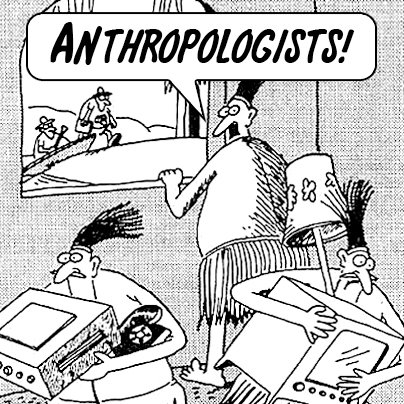Are you getting the sense that anthropologists are coming soon to a neighborhood near you? You might be right. Are you ready to be observed?
Filming consumers in their natural habitats
 According to Linda Tischler in an article in Fast Company not so long ago, “Ad agencies are hiring anthropologists and ethnographers to study and film consumers in their natural environments to see what they really eat, drink, and buy.”
According to Linda Tischler in an article in Fast Company not so long ago, “Ad agencies are hiring anthropologists and ethnographers to study and film consumers in their natural environments to see what they really eat, drink, and buy.”
Case in point: Ogilvy & Mather, one of the world’s top advertising agencies, hired Emma Gilding in 1999 as a corporate ethnographer. One of her assignments? To hang out in bars across the country watching guys knock back beers with their friends, all the while trying observing the male-bonding rituals of twentysomething Miller Lite drinkers.
The article states, “As directors of Ogilvy Discovery, Gilding and her partner, Johanna Shapira, supervise a team of researchers who follow consumers for hours or days at a time, filming them in their native habitats. Their goal: to capture the telling moments that reveal what consumers actually do with products, rather than what they say they do.”
Ethnographic research impacts how, and to whom, a brand is marketed
Since “at least the mid-1990s, the advertising industry has been fighting a war on multiple fronts,” writes Tischler. “Media fragmentation, declining network audiences, information clutter, and ad-zapping technologies have made agencies increasingly eager to find an edge in reaching consumers. Some larger firms believe that ethnographic research such as Gilding and Shapira’s can help identify consumers’ emotional hot buttons, allowing them to craft messages with more resonance.”
According to Bill Gray, then-president of Ogilvy & Mather, New York, ethonographic research is “one more tool to help tip the balance of the environment in favor of our brand.” In today’s competitive marketplace, consumers’ engagement with a brand can mean the difference between a hot seller and a dud.
Gilding, the 35-year-old British native who launched Ogilvy Discovery says, ”This is an authentic experience, not one that’s produced. Our job is to bring a whole world more realistically to life.”
According to the Fast Times article, a videographer filmed beer-drinking consumers (chosen by a recruiting agency) as Gilding observed how hierarchies were established, conflicts resolved, stories were related, even how closely the guys stood to one another…just as in a tribe around a campfire.
Back at Ogilvy, a team of trained anthropologists and psychologists pored over more than 70 hours of footage from five similar nights in bars from San Diego to Philadelphia.
One key insight emerged, according to Tischler’s article: Miller is favored by groups of drinkers, while its main competitor, Bud Lite, is a beer for individuals.
That insight reinforced research that Tom Bick, Miller’s senior brand manager, had been conducting independently. “We could see from our own demographics and focus groups that our drinker base was somewhat different than Bud’s,” Bick says. “But we couldn’t put our finger on it.” Ogilvy’s research confirmed that the archetypal Miller drinker felt more comfortable expressing affection for friends than did the Bud Lite ones. “We felt the Bud guys were much more about impressing each other,” he continued.
It was this understanding of real-life behavior that led to a hilarious series of Miller Lite ads that were dead-on strategically.
If you are curious about how anthropologists conduct ethnographic research and how this might be relevant to your business, take a look at the videos on this website:
Lots of heavyweight companies are now using corporate anthropology, looking for the “meaning” behind consumer behavior
These days, some of the biggest names in corporate America are engaging in ethnographic research. Young & Rubicam, Saatchi & Saatchi, J. Walter Thompson and TBWAChiatDay have all used ethnographic research, as well as Microsoft and MTV. Intell has a team on staff to conduct ethnographic research among user and nonusers of technology they are interested in knowing more about. They even bring onboard additional anthropologists when they need fresh eyes to assist their on-staff ethnographers.
These observational methods are gaining in popularity as companies have become more interested in brands’ emotional qualities, something that isn’t always revealed in focus groups. They realize that it is no longer enough to know what someone says they do or feel. It is far more important to watch what they actually do and learn the real “meaning” of that behavior.
Could corporate anthropology help your company?
To read more about how corporate anthropology and ethnography could help you, here’s a sample of our blogs on the topic:



